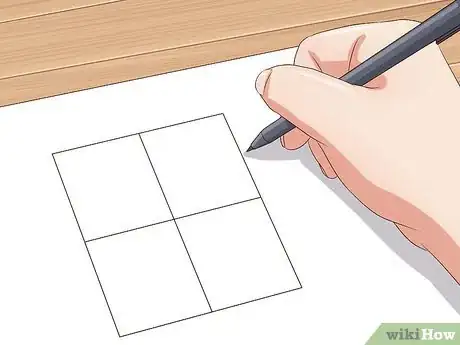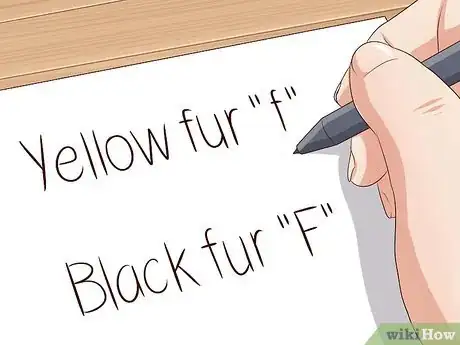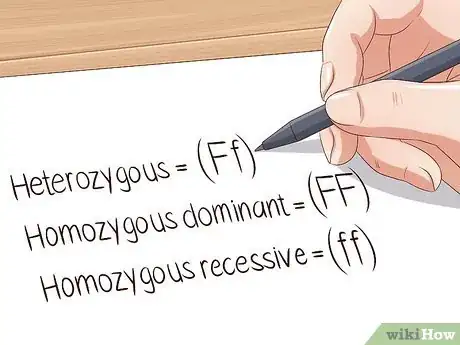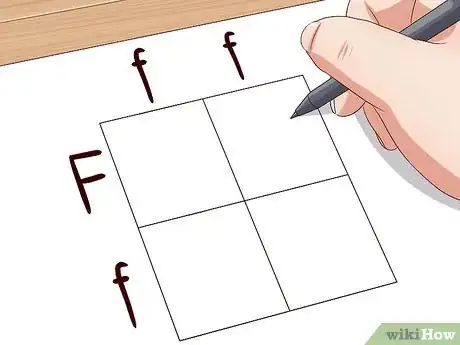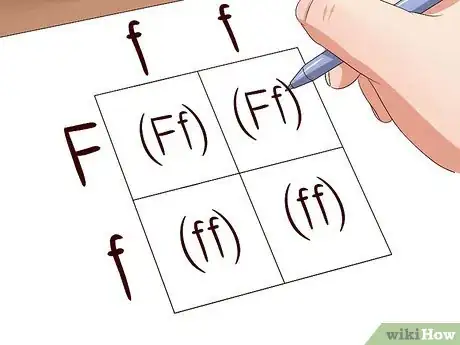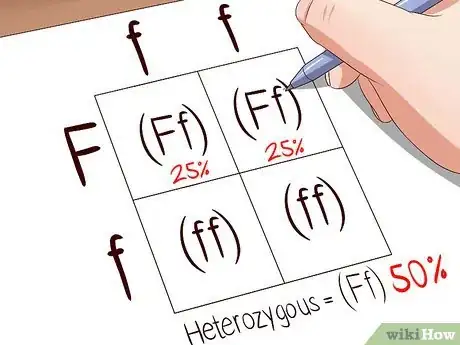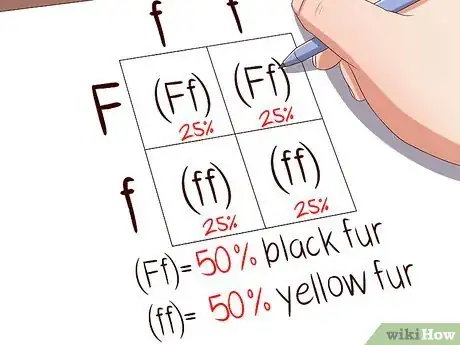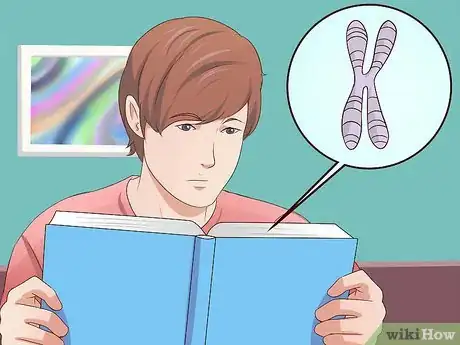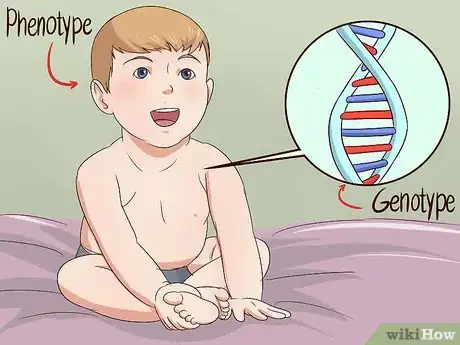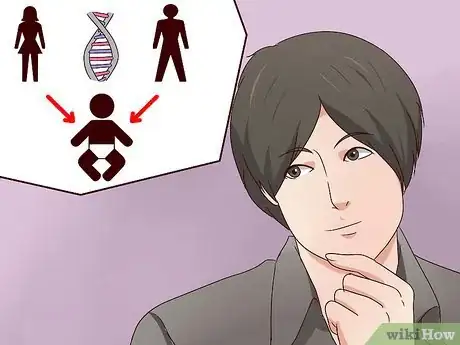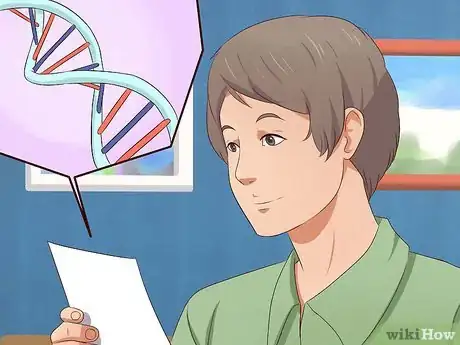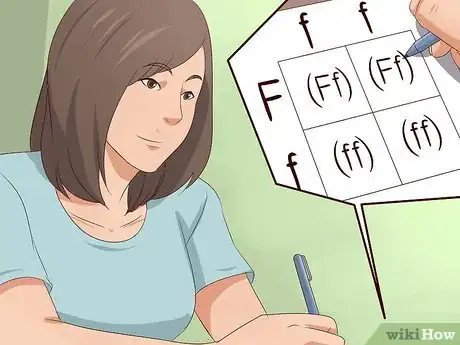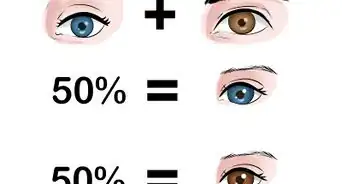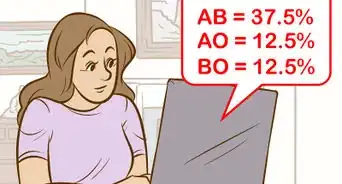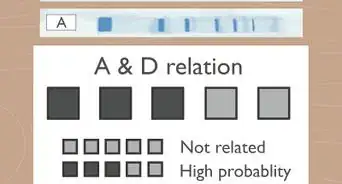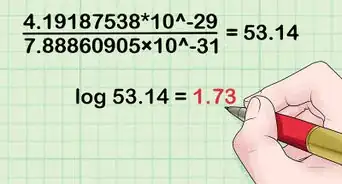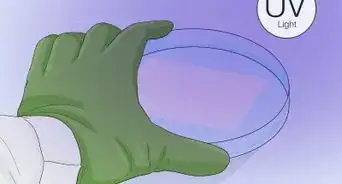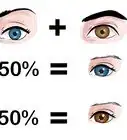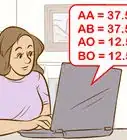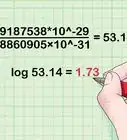wikiHow is a “wiki,” similar to Wikipedia, which means that many of our articles are co-written by multiple authors. To create this article, 62 people, some anonymous, worked to edit and improve it over time.
There are 11 references cited in this article, which can be found at the bottom of the page.
wikiHow marks an article as reader-approved once it receives enough positive feedback. This article has 23 testimonials from our readers, earning it our reader-approved status.
This article has been viewed 469,140 times.
Learn more...
A Punnett square simulates two organisms reproducing sexually, examining just one of the many genes that get passed on. The completed square shows every possible way the offspring could inherit this gene, and what the chances are for each result. Making Punnett squares is a good way to get started understanding the fundamental concepts of genetics.
Steps
Making a Punnett Square
-
1Draw a 2 x 2 square. Draw a box and divide it into four smaller squares. Leave room above the box and to its left, so you can label it.
- Review the background information below if you have trouble understanding any of the steps that follow.
-
2Name the alleles involved. Each Punnett square describes how variations of a gene (alleles) could be inherited if two organisms sexually reproduce. Choose a letter to represent the alleles. Write the dominant allele with any capital letter, and the recessive allele with the same letter in lowercase. It doesn't matter which letter you choose.[1]
- For example, call the dominant gene for black fur "F", and the recessive gene for yellow fur "f".
- If you don't know which gene is dominant, use different letters for the two alleles.
Advertisement -
3Check the parents' genotypes. Next, we need to know the genotype each parent has for that trait. Each parent has two alleles (sometimes the same one) for the trait, just like every sexual organism, so their genotype will be two letters long. Sometimes, you'll already know exactly what this genotype is. Other times, you'll have to work it out from other information:[2]
- "Heterozygous" means it has two different alleles (Ff).
- "Homozygous dominant" means it has two copies of the dominant allele (FF).
- "Homozygous recessive" means it has two copies of the recessive allele (ff). Any parent that shows the recessive trait (has yellow fur) belongs to this category.
-
4Label the rows with one parent's genotype. Pick one parent – traditionally the female (mother), but either will work.[3] Label the first row of the grid with one of that parent's allele. Label the second row of the grid with the second allele.
- For example, the female bear is heterozygous for fur color (Ff). Write an F to the left of the first row, and an f to the left of the second row.
-
5Label the columns with the other parent's genotype. Write the second parent's genotype for the same trait as labels for the columns. This is typically the male's, or father's.
- For example, the male bear is homozygous recessive (ff). Write an f above each of the two columns.
-
6Have each box inherit letters from its row and column. The rest of the Punnett square is easy. Start in the first box. Look at the letter to its left, and the letter above it. Write both these letters in the empty box. Repeat for the remaining three boxes. If you end up with both type of allele, it's customary to write the dominant allele first (write Ff, not fF).[4]
- In our example, the top left box inherits F from the mother and f from the father, to make Ff.
- The top right box inherits an F from the mother and f from the father, to make Ff.
- The bottom left box inherits an f from both parents, to make ff.
- The bottom right box inherits an f from both parents, to make ff.
-
7Interpret the Punnett square. The Punnett square shows us the likelihood of creating offspring with certain alleles. There are four different ways the parents' alleles can combine, and all four are equally likely. This means that the combination in each box has a 25% chance to occur. If more than one box has the same result, add up these 25% chances together to get the total chance.[5]
- In our example, we have two boxes with Ff (heterozygous). 25% + 25% = 50%, so each offspring has a 50% chance of inheriting the Ff allele combination.
- The other two boxes are each ff (homozygous recessive). Each child has a 50% chance of inheriting ff genes.
-
8Describe the phenotype. Often, you're more interested in the children's actual traits, not just what their genes are. This is easy to find in the most basic situation, which is what Punnett squares are usually used for. Add up the chance of each square with one or more dominant alleles to get the chance that the offspring expresses the dominant trait. Add up the chance of each square with two recessive alleles to get the possibility that the offspring expresses the recessive trait.[6]
- In this example, there are two squares with at least one F, so each offspring has a 50% chance to have black fur. There are two squares with ff, so each offspring has a 50% chance to have yellow fur.
- Read the problem carefully for more information about the phenotype. Many genes are more complex than this example. For example, a flower species might be red when it has the RR alleles, white when it has rr, or pink when it has Rr. In cases like this, the dominant allele is then referred to as an incomplete dominant allele.
Background Information
-
1Review genes, alleles, and traits. A gene is a piece of "genetic code" that determines a trait in a living organism – for example, eye color. But eye color can be blue, or brown, or various other colors. These variations of the same gene are called alleles.
-
2Understand genotype and phenotype. All your genes together make your genotype: the entire length of DNA that describes how to build you. Your actual body and behavior are your phenotype: how you ended up, partly because of genes but also because of diet, possible injury, and other life experiences.[7]
-
3Learn about gene inheritance. In sexually reproducing organisms, including humans, each parent passes on one gene for each trait. The child keeps the genes from both parents. For each trait, the child might have two copies of the same allele, or two different alleles.[8]
- An organism with two copies of the same allele is homozygous for that gene.[9]
- An organism with two different alleles is heterozygous for that gene.
-
4Understand dominant and recessive genes. The simplest genes have two alleles: one dominant and one recessive. The dominant variation shows up even if a recessive allele is also present. A biologist would say that the dominant allele is "expressed in the phenotype."[10]
- An organism with one dominant allele and one recessive allele is heterozygous dominant. These organism are also called carriers of the recessive allele, since they have the allele but don't show the trait.[11]
- An organism with two dominant alleles is homozygous dominant.
- An organism with two recessive alleles is homozygous recessive.
- Two alleles of the same gene that can combine to make three different colors are called incomplete dominants. An example of this are cream-dilute horses, where cc horses are red, Cc horses are a shade of gold, and CC horses are a light shade of cream.
-
5Find out why Punnett squares are useful. The end result of a Punnett square is a probability. A 25% chance at red hair doesn't mean that exactly 25% of the children will have red hair; it's just an estimate.[12] However, even a rough prediction can be informative in some situations:
- Someone running a breeding project (usually developing new plant strains) wants to know which breeding pair gives the best chance at good results, or whether a certain breeding pair is worth the effort.
- Someone with a serious genetic disorder, or a carrier of an allele for a genetic disorder, wants to know the possibility that he'll pass it on to his children.
Community Q&A
-
QuestionHow do I know when the allele is dominate? How do I know if the allele is recessive ?
 Community AnswerGenerally your teacher will use common examples that you know or have from the Mendelian pea experiment. Also, if the letter is capitalized it is the dominant allele - recessive allele is the lower case letter. Often the letter for the trait corresponds to the dominant allele - like tall is dominant to short so the teacher will use the letters T = tall and t = short.
Community AnswerGenerally your teacher will use common examples that you know or have from the Mendelian pea experiment. Also, if the letter is capitalized it is the dominant allele - recessive allele is the lower case letter. Often the letter for the trait corresponds to the dominant allele - like tall is dominant to short so the teacher will use the letters T = tall and t = short. -
QuestionWhy is there a 50% chance of black or yellow if black is dominant and yellow is recessive?
 Community AnswerBecause in the specific example used, one parent has two recessive alleles and the other parent has one dominant allele and one recessive allele. If you look at the resulting square, it's clear why the possible outcomes are 50/50: there's a 50% chance that the offspring will inherit recessive alleles from both the father and the mother. If both parents had one dominant allele and one recessive allele, then there would only be one possible recessive-recessive combination, and the chance of yellow in the offspring would be only 25%.
Community AnswerBecause in the specific example used, one parent has two recessive alleles and the other parent has one dominant allele and one recessive allele. If you look at the resulting square, it's clear why the possible outcomes are 50/50: there's a 50% chance that the offspring will inherit recessive alleles from both the father and the mother. If both parents had one dominant allele and one recessive allele, then there would only be one possible recessive-recessive combination, and the chance of yellow in the offspring would be only 25%. -
QuestionHow do I know which one is dominant and which is recessive?
 Community AnswerThe dominant allele (for example, B) is the one that, in a normal cross, will show up in the phenotype if either one or two of itself are present. So, if Bb and BB produce the same phenotype, you know that B is dominant because both 1 and 2 B's produce the same result The recessive allele (for example, b) is the one that needs two of itself in order to be expressed in the phenotype. So, if b is recessive and B is dominant, only bb will show the recessive allele in the phenotype.
Community AnswerThe dominant allele (for example, B) is the one that, in a normal cross, will show up in the phenotype if either one or two of itself are present. So, if Bb and BB produce the same phenotype, you know that B is dominant because both 1 and 2 B's produce the same result The recessive allele (for example, b) is the one that needs two of itself in order to be expressed in the phenotype. So, if b is recessive and B is dominant, only bb will show the recessive allele in the phenotype.
References
- ↑ https://pressbooks.umn.edu/classroompartners/chapter/punnett-squares/
- ↑ https://bio.libretexts.org/Bookshelves/Introductory_and_General_Biology/Book%3A_Introductory_Biology_(CK-12)/03%3A_Genetics/3.06%3A_Punnett_Squares
- ↑ https://www.youtube.com/watch?v=prkHKjfUmMs
- ↑ https://flexbooks.ck12.org/cbook/ck-12-biology-flexbook-2.0/section/3.6/primary/lesson/punnett-squares-bio/
- ↑ http://knowgenetics.org/dominant-inheritance/
- ↑ https://www.omnicalculator.com/biology/punnett-square
- ↑ https://flexbooks.ck12.org/cbook/ck-12-biology-flexbook-2.0/section/3.6/primary/lesson/punnett-squares-bio/
- ↑ https://www.khanacademy.org/science/ap-biology/heredity/mendelian-genetics-ap/a/probabilities-in-genetics
- ↑ http://www.stat.washington.edu/thompson/Genetics/1.3_genotypes.html
- ↑ https://bio.libretexts.org/Bookshelves/Introductory_and_General_Biology/Book%3A_Introductory_Biology_(CK-12)/03%3A_Genetics/3.06%3A_Punnett_Squares
- ↑ http://www.stat.washington.edu/thompson/Genetics/1.3_genotypes.html
- ↑ https://pressbooks.umn.edu/classroompartners/chapter/punnett-squares/
- ↑ http://learn.genetics.utah.edu/content/inheritance/patterns/
- ↑ https://www.khanacademy.org/science/ap-biology/heredity/mendelian-genetics-ap/a/the-law-of-independent-assortment
- ↑ http://scienceprimer.com/punnett-square-calculator
About This Article
To make a Punnett square, start by drawing a box that's divided into 4 equal squares. Then, label the rows with one parent's genotype and the column's with the other parent's genotype. Then, label each square, starting with the letter to the left of the square followed by the letter above the square. To learn how to interpret your Punnett square, scroll down!
